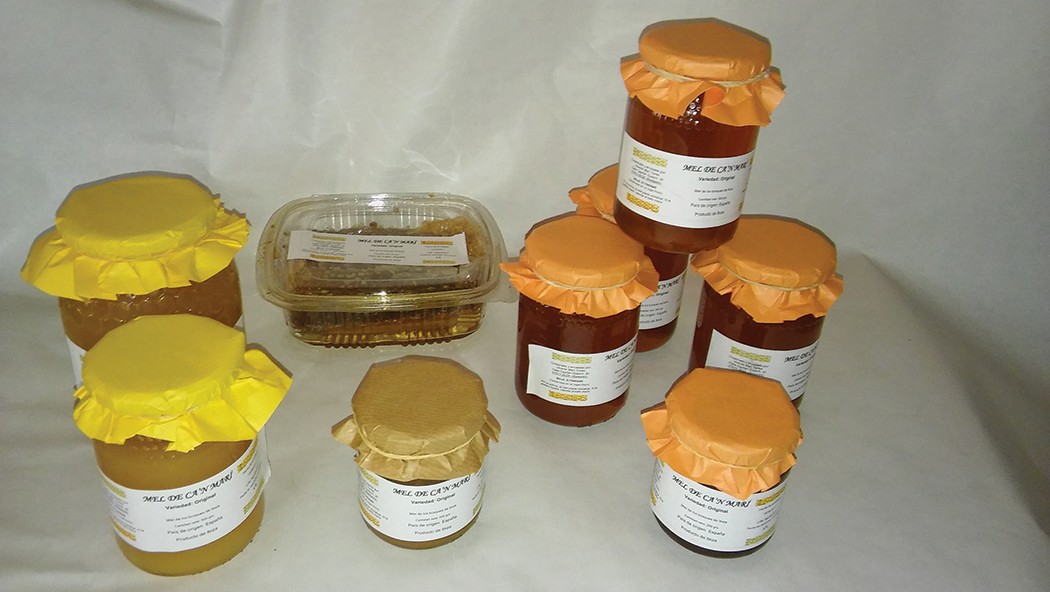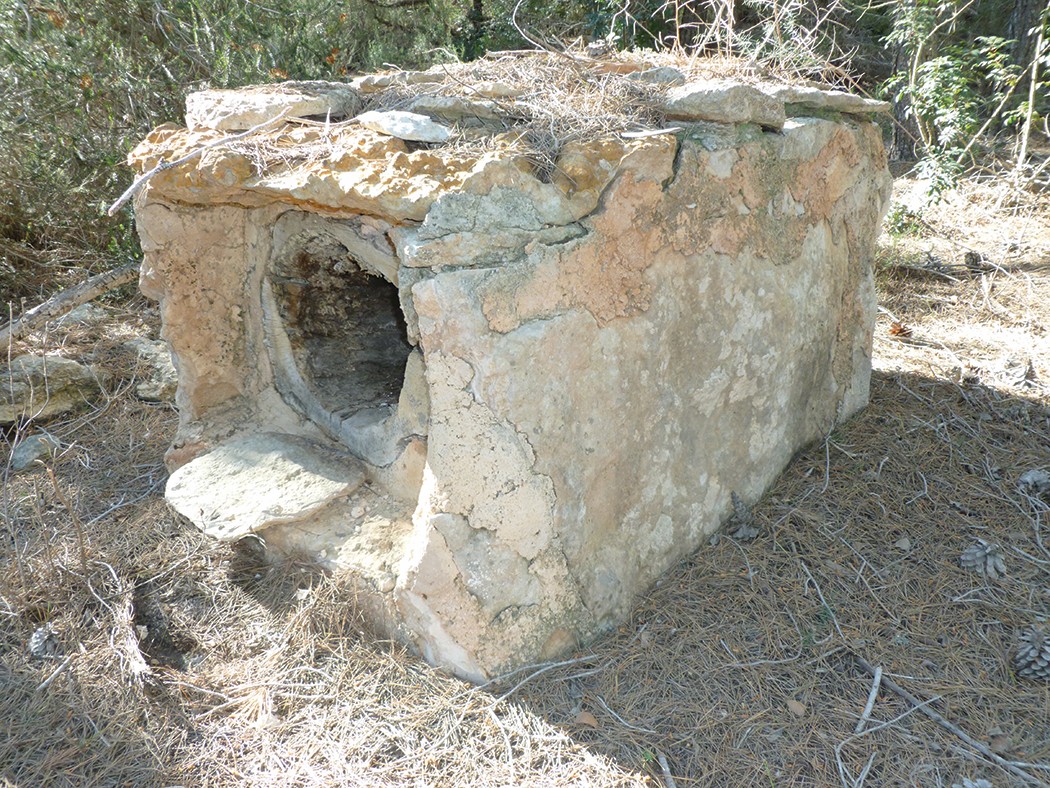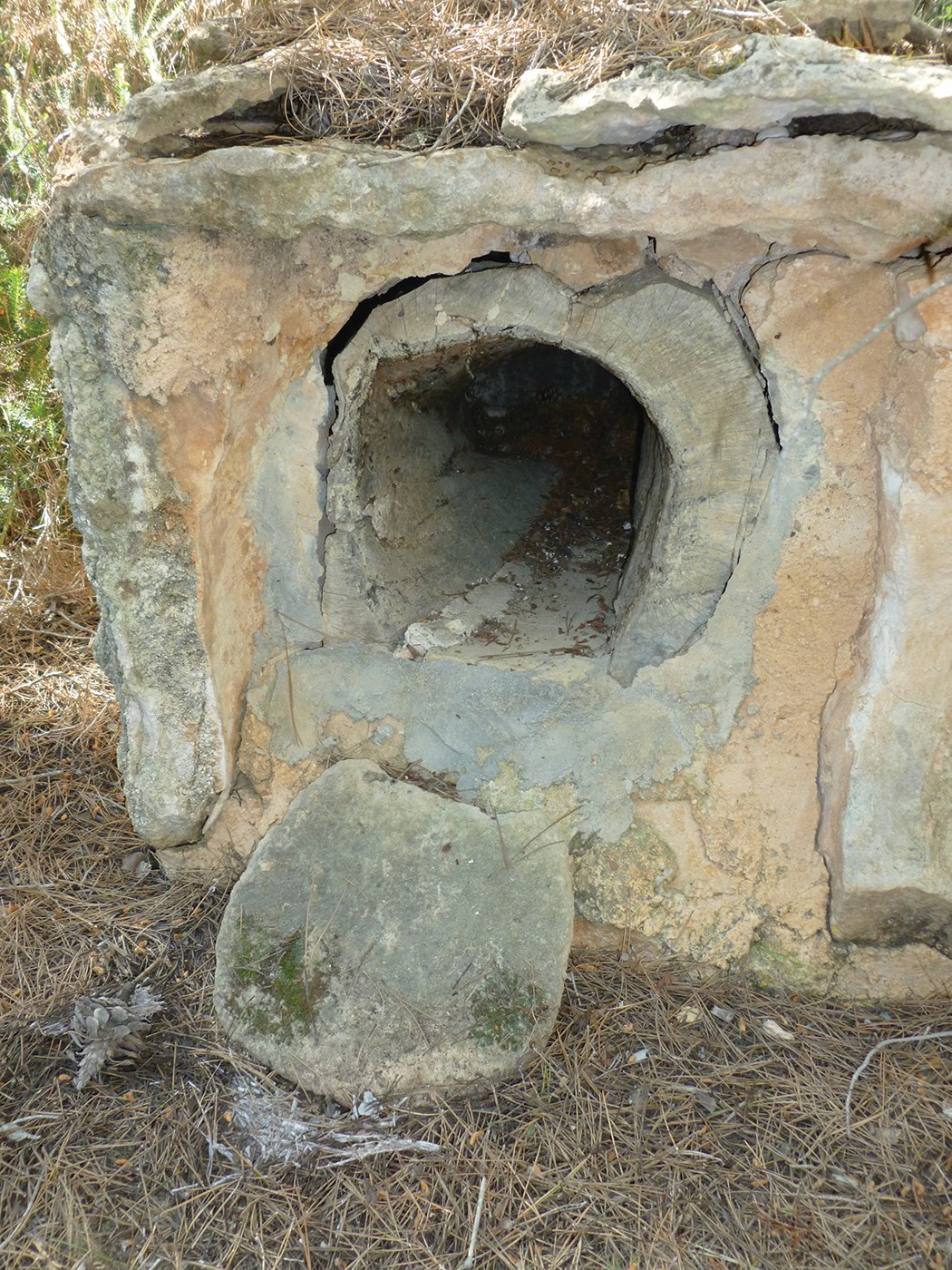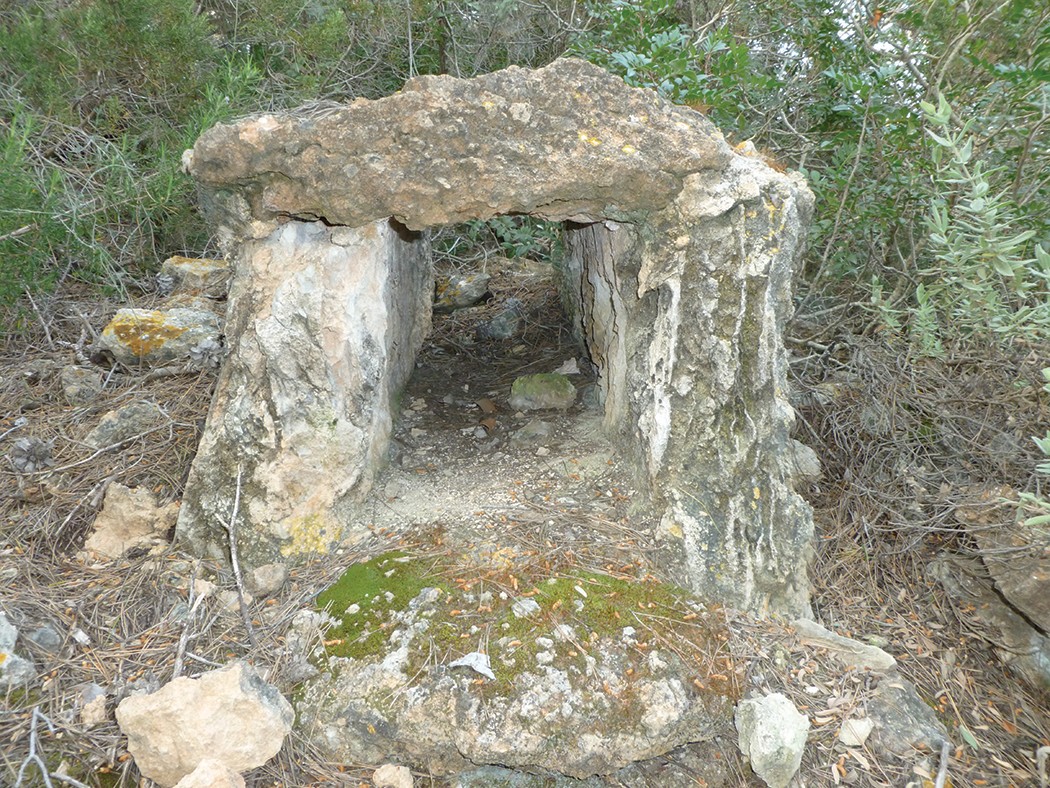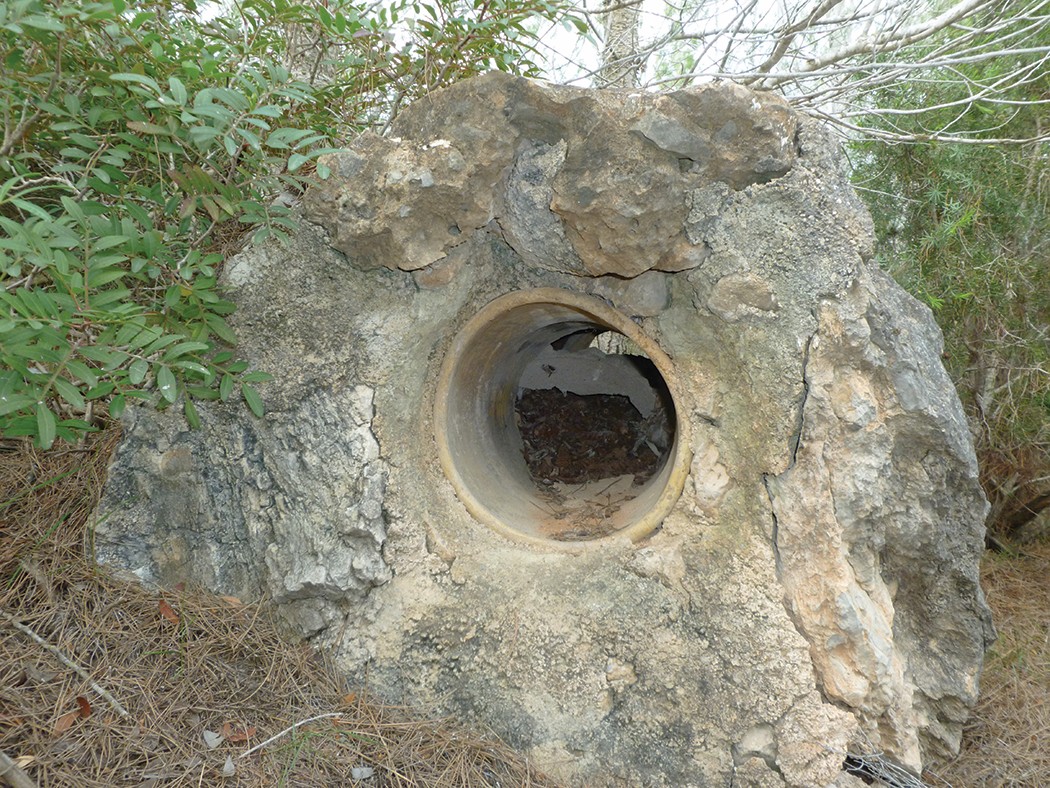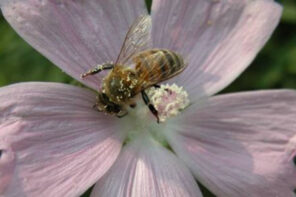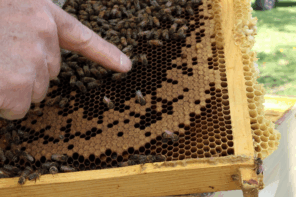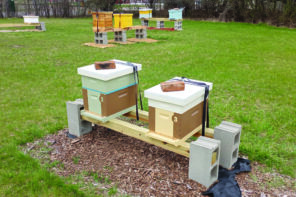Beehives Made of Stones and Logs
Friederike Diestel
When wandering around in nature on Ibiza, if you are lucky, you will discover massive, partly dilapidated, wood-lined stone mounds in remote places, mostly in the forest or at the edge of the forests.
They once served the indigenous people as beehives and are testimony to the long history of honey on the Mediterranean islands of Ibiza.
This form of traditional, ancient beehives, “unique in the world” for their construction, may have been used “from the Phoenicians until the second half of the last century,” explains Vicent Marí, chairman of the “Asociación de Apicultores” of Ibiza.
The first historical evidence dealing with beekeeping in relation to how humans domesticate bees is found in murals in the Temple of the Sun in Egypt from around 4,400 years ago. There are depictions of beehives and several men extracting the honeycomb, filtering the honey, and then packing it.
Also in Egypt ceramic fragments and limestone were found on which notes about honey were made. On an ostracon from Deir el-Medina from around 3,500 years ago, an inscription appears as a recipe for the use of honey for the eyes.
The Egyptian knowledge of honey and wax was carried over to the Greek and Roman cultures.
Today there are papyri with references to honey such as cookbooks, recipes for cosmetics, wound healing or home and personal hygiene.
In ancient Greece, the doctor Hippocrates prescribed honey to heal lung and cardiovascular diseases, but also as a laxative, for intestinal diseases or to heal wounds.
HEALING PROPERTIES
The doctor Maimonides administered honey in the 12th century to prevent Winter diseases. The Romans valued its effects as an aphrodisiac. Both the Bible and the Koran speak of the use of honey to maintain health.
In the Qur’an one reads that honey makes hair long, beautiful and smooth and that it improves vision when it is applied to the eyes. If you rub it over your teeth, they become white and shiny and keep your gums healthy.
With the advent of antibiotics, the medicinal uses of honey decreased after World War II. Regardless, it is back in trend today as part of the return to natural products due to its proven effectiveness against bacteria, including those that are resistant to antibiotics.
We know that the traces of beekeeping in the Spanish islands of Ibiza and Formentera were never lost in earlier times and that the use of honey and wax continued uninterrupted until the Arab colonization of the islands.
The Catalans began to populate the islands after conquering the Pityuses in 1235. They brought their knowledge and experience with them, as a result of which the knowledge of beekeeping by the Arabs in Ibiza was forgotten.
This led to the deplorable destruction of many beehives, which at that time consisted of fixed chambers, the interior of which was not as easily accessible as beekeepers know today. The few remaining archaic “caseres d´abelles” on Ibiza consist of reeds, clay, stones and hollow tree trunks.
Beekeeping declined significantly in medieval Europe when cane and beet sugar was introduced around the 16th century. At that time only monks kept bees in their monasteries to supply the churches with wax and their congregations with honey.
But the “beekeeping crisis” did not affect Ibiza and Formentera, however, as their isolated situation forced farmers to continue caring for their bee colonies. No decline was recorded on the islands because the islanders were dependent on self-sufficiency.
THE PHOENICIANS
Beekeeping in Ibiza, as in the entire Mediterranean area, experienced an important development with the colonization by the Phoenicians. In Ibiza they laid the foundation stone in 654 with the settlement in the bay of Sa Caleta, where they first settled until they later founded the Acropolis and Necropolis of Ibiza Town.
They were excellent seafarers and merchants. In Ibiza they grew vines and olive trees and refined beekeeping. They also made weapons and supplied some of the armament that Hannibal used against the Romans in the Second Punic War.
Beekeeping in Ibiza looks back on Arabic, Punic, Catalan and Roman traditions. The quality of the “Miel de Ibiza” and wax is highly valued today in gastronomy as well as in medicine.
“Although we don’t have any documented or archaeological data to confirm this, it can be assumed that the indigenous people of our islands have practiced beekeeping since the Phoenicians,” Marí sums up the story.
Some of the ancient stone apiaries are from the 7th century BC and have survived on Ibiza to this day. A few were used to make Ibiza honey until the second half of the 20th century. There is currently one beekeeper in Santa Agnés de Corona who keeps six colonies in the antique models and produces excellent honey.
They are most common in the North of the island. In the rest of the island they have almost disappeared as a result of the relentless construction progress in rural areas.
CHRONICLES
A reference to honey in Ibiza can be found in the lines of the work “Liber Maiolichinus de Gestis Pisanorum Illustribus”, written around the year 1125, in which it says: “Rocky mountains surround the entire landscape, countless grasses and fruits, honey in sufficient quantity sprout from their soil and fresh water flows from the springs. The country produces a lot of barley and also fertile vineyards.”
The second oldest historical reference to beekeeping in Ibiza dates back to 1242. It is a lease for some land that includes everything needed for its use, including “all the bees that can be found there”.
In the Chronicle of Frare Marsili from 1300, who was commissioned to translate Jaime I’s “Llibre dels fets” from Catalan into Latin, it says about Ibiza: “melis habet satis” (“there is enough honey”) .
A court document from 1328 deals with the sale of 77 beehives. There is another text from this period in which a number of provisions are put together for the market traders who regulated the sale of their goods, including the “miel de Ibiza”, on todays Plaça de Vila.
Advances in beekeeping, the use of new techniques and materials did not reach Ibiza until the 1880s. The Archduke Ludwig Salvator of Austria promoted this activity together with his friend Francisco Andreu Femenías, an excellent beekeeper of the royal family. Salvator wrote about it in a chapter in his seven-volume encyclopedia “The Balearic Islands” (1869-1891).
POLLEN
In 2017, the “Asociación de Apicultores de Ibiza” carried out a palynological examination (pollen analysis) of honeys from Ibiza and Formentera, divided into Spring, Summer and Autumn harvests. “Miel de Ibiza” is usually multifloral and is a mix of nectars from different flowers, such as citrus, rosemary or pine.
The pollen that came out strongly in the investigation was from the carob tree (Ceratonia siliqua) and heather (Erica multiflora). These special notes make the taste and aroma of this honey characteristic of the island.






